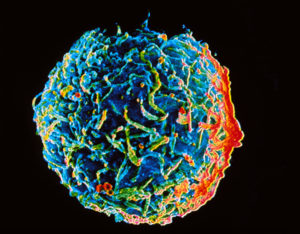Regulatory B cell immunotherapy

Restoring the balance with Regulatory B cell therapies
Breg are identified as an immune signature to predict improved transplant organ function and survival. Defective Breg are found in patients with autoimmune diseases such as Rheumatoid Arthritis.
Breg cellular therapy restores this immune balance in mouse models, protecting against disease. Breg also induce regulatory T cells (Treg), which are currently being introduced as immunotherapy in transplantation and autoimmunity. Breg are identified in cancers with poor responses to conventional treatment, including pancreatic carcinoma, so this technology could provide therapeutic targets to improve outcomes.
Whilst mouse Breg are useful to demonstrate their critical importance in maintaining immune balance, human Breg have only been found in very small populations insufficient for therapeutic development. Human Breg also demonstrate functional differences to mouse Breg, which limted clinical translation of Breg therapeutic targets until now.
Human Breg cellular therapy
Oxford researchers have developed a method to produce human Breg cells from patients’ own B cells. The researchers took mixed populations of human B cells within blood and turned them into B cells with regulatory function. This new technology rapidly expands human Breg populations, producing a scalable technique to generate human Breg immunotherapy. Using gene editing, the researchers identified key therapeutic targets, including TIM-1 and CD154 within expanded human Breg, which regulate function.
The novel technique for generation of human Breg used an approach suitable for clinical use, where no animal-based materials used to aid growth. A humanised mouse model of transplantation has been shown that this technology can modulate the immune system in vivo. Administration of human Breg prolonged survival of human skin transplants in mice with human immune systems. Human Breg expressing TIM-1 and CD154 have been identified in some cancers, revealing a new potential drug target.
Key benefits of technology
- Ability to suppress T cell responses and protect human transplants
- Ability to boost and induce Treg as combination immunotherapy
- Potential to scale-up for therapeutic development
- Scope for drug development against novel therapeutic targets
about this technology

